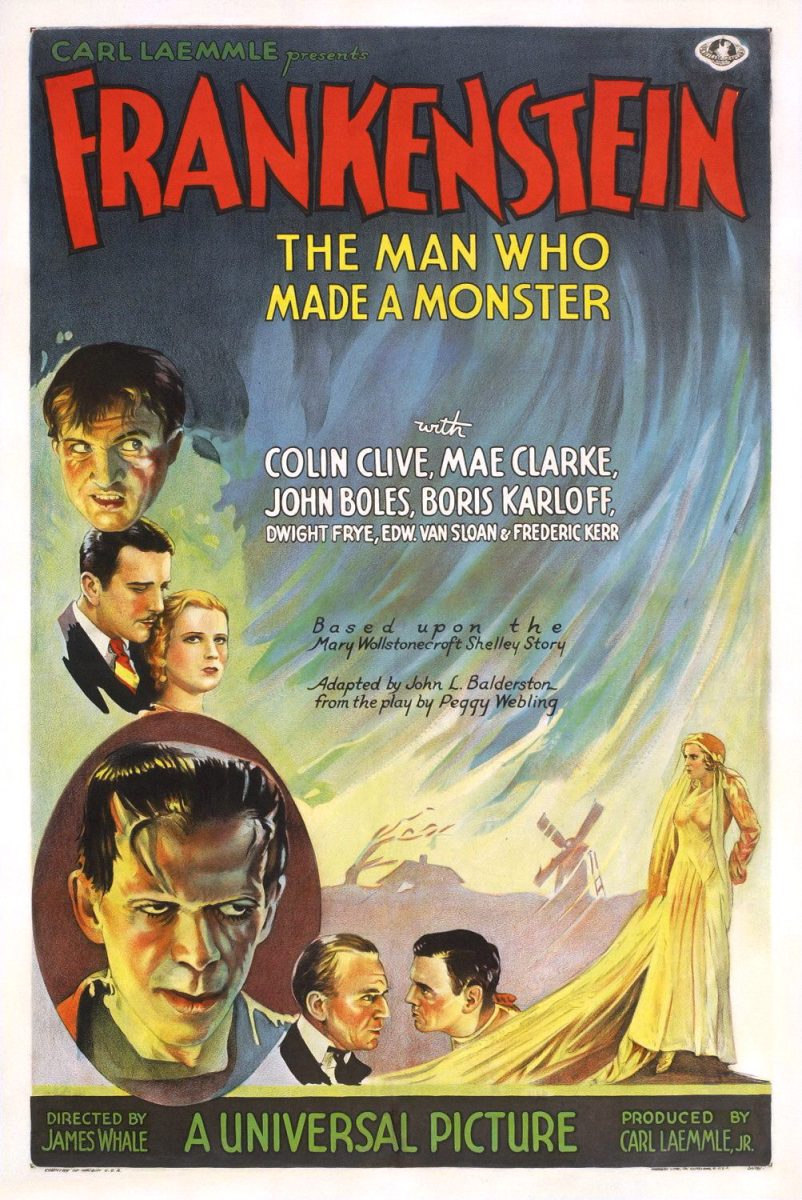
James Whale’s 1931 “Frankenstein”, one of the most influential films to the horror genre. Since it paved the way for future horror movies, you can see it’s influence in numerous ways such as lighting and themes. Courtesy of iMDb
Horror movies have been an essential part of film culture since the film industry’s early days. One of the first horror movie crazes in Hollywood was over the “Universal Monsters” movies, especially popular in the 1930s. “Frankenstein” (1931), directed by James Whale and starring prolific character actor Boris Karloff is one of the most famous movies from this era. “Frankenstein” is a masterclass in a film movement called German Expressionism, using several of its signature techniques, such as heavy shadows, angular set pieces and angular camera shots (“Dutch angles”).
By far the standout feature of the film, in this reviewer’s opinion, at least, is Karloff’s portrayal of Frankenstein’s monster. Karloff imbues the character with such emotion that the film breaks your heart for the monster, rather than for his creator.
Another significant era of horror film history is the slasher, which began in earnest in 1974 with the release of “The Texas Chain Saw Massacre.” This film is famous for being more gruesome than it actually is, which is pulled off by its use of incredible sound design as well as stellar performances from Marilyn Burns, who plays final girl Sally Hardesty, and from Gunnar Hansen, Edwin Neal and Jim Siedow, who play the murderous Sawyer family (Leather Face, the Hitchhiker and Drayton Sawyer, respectively).
Today, the horror genre is in a new renaissance, bringing in new box office hits every year. This is partially thanks to a rise in a new horror subgenre: arthouse, or “elevated” horror, which combines traits of arthouse cinema such as complex themes, character-driven narratives and artistic experimentation.
This genre of horror can be seen in films such as Ari Aster’s 2018 film “Hereditary”. This story follows the family of Annie Graham, played in a spectacular performance by Toni Collette, after the character’s mother passes away at the beginning of the film. The heavy tone of grief propels the plot forward, as the family unravels a hidden mystery lurking beneath the surface of their lives.